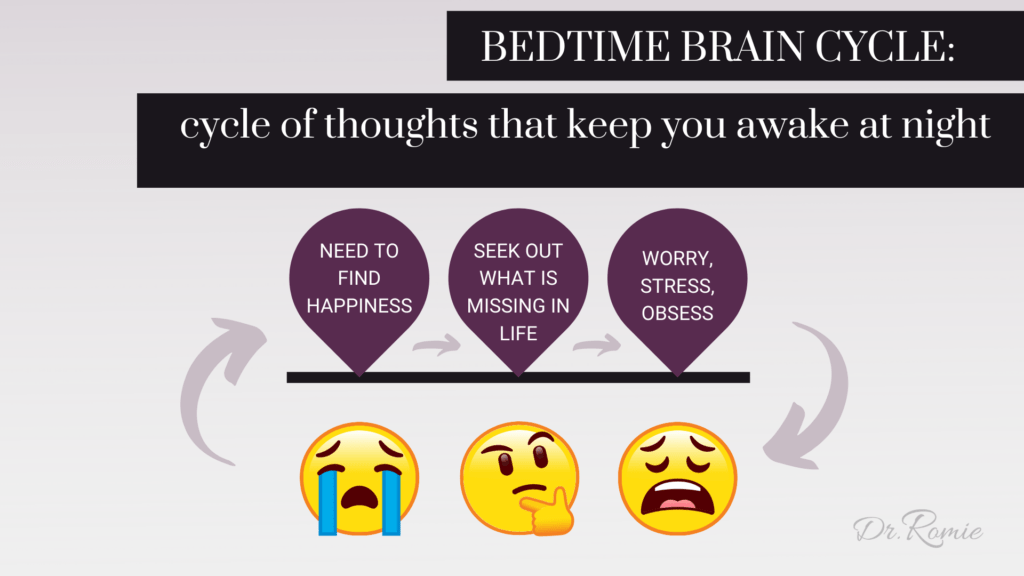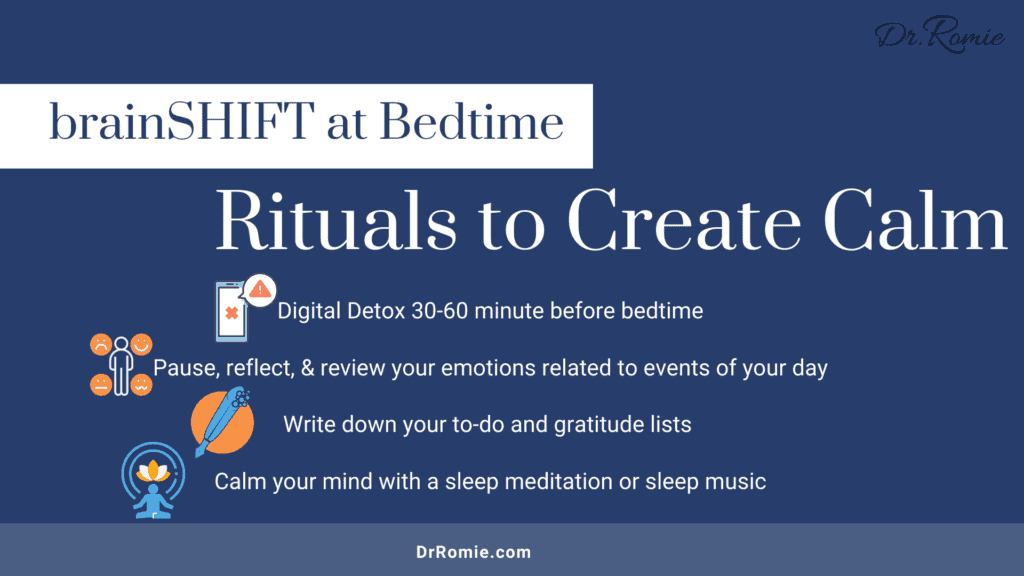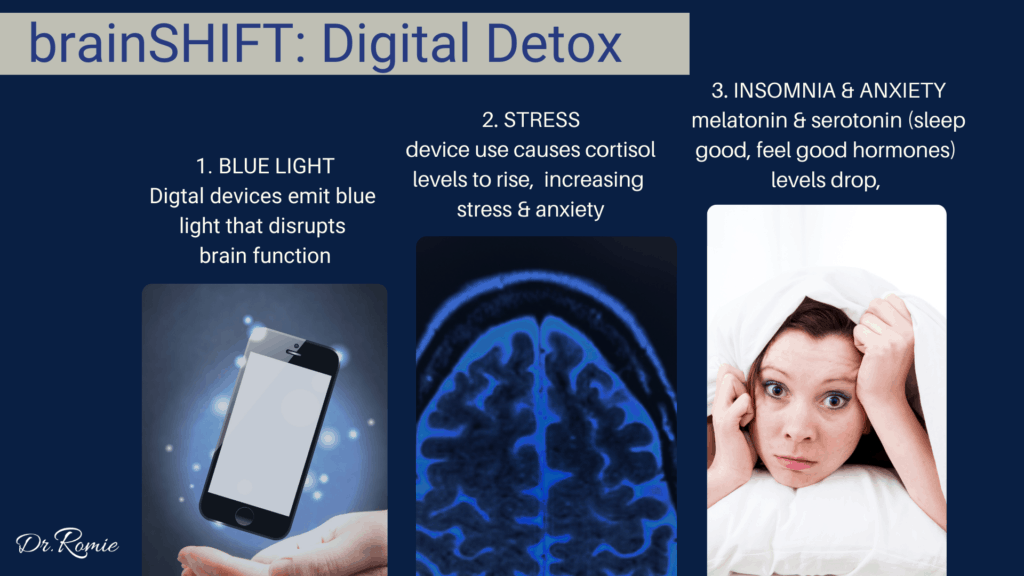I have a confession as a sleep evangelist. In the last few weeks, I have to admit that my sleep cycle got disturbed again; how about you? Maybe you haven’t slept well in months; you are not alone.
My small and dedicated team celebrates taking our innovative workplace wellness program, “The brainSHIFT Protocol” to a completely virtual experience using new technology. We have a successful path forward in this pandemic as a female-owned small business!
I thought I would feel relaxed, so why am I losing sleep?
Worries and tiny details clutter up my brain at night. I am waking up between two to three am, checking on random to-do list items that can easily wait until working hours. I am guessing I am not alone.
Tell me about your sleep. Are you losing sleep despite having successful days in your business?
Sleep disturbances are on the rise in success-driven professionals

We spend more time in social isolation, sitting in front of computer screens, and attempting to ignore the toxic 24-7 news cycle. When we reach a goal, succeed at restoring or shifting our businesses, we think we will feel calm. Yet our brain circuitry has been wired for chaos.
There is a way out; join me as I recommit to my mindfulness-based rituals in the evenings.
Prioritize Your Brain Health Before your Q4 Business Goals

In order to speed up, we must first slow down.
To succeed in your Q4 business goals, start by committing to your brain health. The world outside of your mind may seem mired in chaos. However, there is a way to calm down our brain’s circuitry to reduce inflammation and the negative impacts of stress.
While I am asking you for just 20-30 minutes prior to bedtime, I have started shutting down all digital devices 3-4 hours prior to bedtime
By forcing myself to shut down computers, televisions, and even phone calls I started to create other to-do lists in my home. Organizing my kitchen drawers (again) helped the transition, but eventually, the key was to welcome boredom.
STEP 1: Embrace boredom. Do nothing.
Yes, sit with the discomfort of doing nothing. Boredom and doing nothing but staring at the paint patterns on my wall. The busier your schedule, the more important it is to embrace boredom. Boredom has been shown in clinical studies to improve mental health, creativity, and the search for new ideas, goals, and self-control skills.
Our eyes are strained in our current state of social isolation, and our brains are overloaded with information. Because we are using at least one digital device at a time, we are fostering a scarcity of attention. Attention uses one’s limited cognitive resources for productive activities. So taking a break from screens, to-do lists, and chores can be a valuable opportunity to help our overloaded brains relax and alleviate stress. It is beneficial to step away from social media and other tasks long enough to feel bored.
30 Minutes at Night to brainSHIFT from Chaos to Calm

How do we train our brains to a state of a do-nothing calm?
If we can commit to 20-30 minutes of our nighttime routine to calming rituals, we can elevate serotonin levels (that help us feel calm and happy). We can start to restore melatonin levels that should naturally rise at night to help us sleep. When our eyes are glued to our digital devices at night, the bright light depresses the serotonin and melatonin levels in our brains. When our serotonin and melatonin levels drop in the evening, we then feel wired and tired.

STEP 2: Start a mindfulness-based bedtime ritual.
Replace your digital devices with traditional pen and paper. If your thoughts are still running a marathon in your mind, introduce the cognitive behavioral therapy exercise.
- brainDUMP: Write down your to-do lists. Creating a brainDUMP list is beneficial because our senses of touch and sight are stimulated using pen and paper. The process of journaling and list building tells our hippocampus to release these words. The hippocampus is an essential area for processing memories and emotions. Processing our day’s thoughts and feelings is a crucial step in shutting off our busy brains, especially before bedtime. Give this exercise a try for 5-7 nights before you dismiss the idea.
- What do you write down? Start by naming your emotions.
- Then write down your personal and professional to-do lists.
- What do you accomplish today?
- Who and what are you thankful for today?
STEP 3: How to start a meditation practice to help your wired and tired brain
- After a brainDUMP, typically, if the brain is still wired, it’s a sign that your cortisol levels and other inflammation markers are elevated in the brain.
- To ease a wired and tired mind, add a mindfulness-based practice to your nighttime ritual. If meditation seems too difficult, a guided meditation or sleep music can also be beneficial.
- Here is a podcast episode that guides you to start an at-home meditation practice:
Our Gift for You
In partnership with MediMind by Cloud 9, we are offering you this healing gift. I am honored to join the advisory board of Cloud 9, who creates medical grade meditations in an app is being used in hospitals and clinics all over North America.
My recommendation in their expansive library, try the guided meditations for sleep. When my thoughts are chaotic, my choice is sleep music on this app.
Here is access to a FREE 90-day trial for our #brainSHIFT community: https://bit.ly/3nuCmM5

